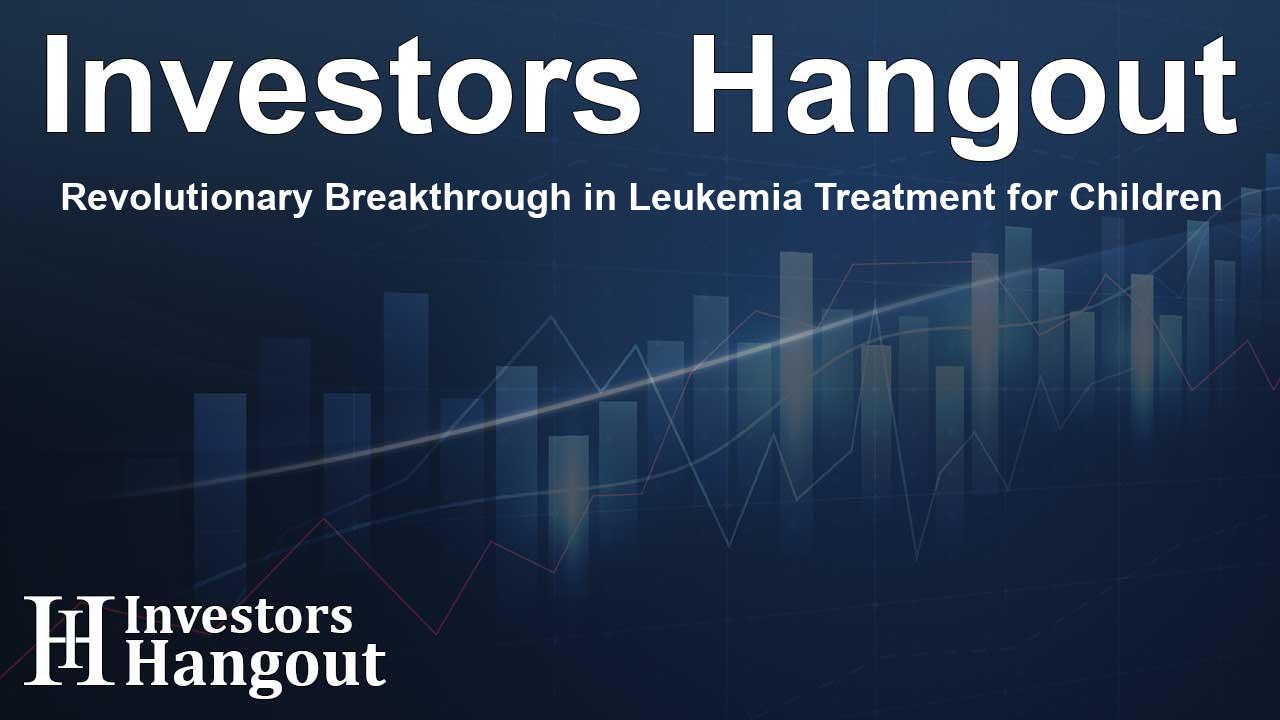Revolutionary Breakthrough in Leukemia Treatment for Children

Transformative Results in Pediatric Cancer Treatment
In a significant advancement for pediatric oncology, landmark clinical trial results have emerged, promising a brighter future for children battling acute lymphoblastic leukemia (ALL). This transformative breakthrough has been made possible by the continued funding and support from philanthropic organizations dedicated to cancer research.
Overview of the Clinical Trial
The clinical trial, which involved over 4,200 children diagnosed with standard-risk ALL, showcased groundbreaking outcomes. The Children's Oncology Group (COG) presented these pivotal findings at a prestigious medical forum, marking a historic moment in the treatment of this aggressive cancer type. Key among the findings is the introduction of a targeted immunotherapy drug, which has demonstrated substantial improvements in disease-free survival rates.
Significant Findings from the Trial
The trial results revealed that children treated with blinatumomab, an innovative immunotherapy, exhibited a remarkable 96% three-year disease-free survival (DFS) rate compared to 87.9% for those undergoing traditional chemotherapy alone. Furthermore, blinatumomab has been remarkably well-tolerated, with minimal severe side effects, indicating a potential shift away from older, more toxic chemotherapy protocols.
The Role of St. Baldrick's Foundation
The St. Baldrick's Foundation has played a pivotal role in funding critical research and clinical trials. As the largest philanthropic contributor to COG, their support has been instrumental in advancing treatments that can enhance the care available to young cancer patients. Their generous contributions ensure that access to groundbreaking clinical trials remains widespread, enabling countless children to receive potentially lifesaving treatments.
How Blinatumomab Works
Blinatumomab is designed to engage the immune system by targeting CD19, a protein present on the surface of leukemia cells. This targeted approach allows the body’s immune system to identify and eliminate cancerous cells more effectively than traditional chemotherapy methods. Notably, this treatment avoids long-term side effects, which is crucial for the health and well-being of pediatric patients.
A New Era in the Fight Against Childhood Cancer
The findings from this clinical trial suggest a promising pathway not only for children with ALL but potentially for other types of childhood cancers. The medical community remains hopeful that the principles established through these results can be replicated across various cancer treatments, leading to safer and more effective care for young patients.
The Future of Pediatric Oncology
With the successful integration of blinatumomab into treatment protocols, the focus shifts toward enhancing the standards of care across the board. Continued research and support will be essential in realizing the full potential of these new treatments. In closing, the recent results from this trial represent a monumental step forward in improving survival outcomes for children diagnosed with cancer and a beacon of hope for families affected by the disease.
Frequently Asked Questions
What is acute lymphoblastic leukemia (ALL)?
ALL is a type of cancer that affects the blood and bone marrow, primarily in children, characterized by the overproduction of immature white blood cells.
How does blinatumomab work?
Blinatumomab is a targeted immunotherapy that connects the body’s immune system to cancer cells, allowing for more effective destruction of those cells.
What were the results of the clinical trial?
The trial reported a 96% three-year disease-free survival rate for children treated with blinatumomab, significantly higher than those receiving standard chemotherapy.
Why is the support from St. Baldrick's Foundation important?
The foundation funds critical research and clinical trials that help develop safer and more effective treatments for childhood cancer, expanding access for patients.
What does this breakthrough mean for the future of childhood cancer treatment?
This breakthrough signifies a shift toward safer, targeted therapies in pediatric oncology, with the potential to improve outcomes for various childhood cancers.
About The Author
Contact Henry Turner privately here. Or send an email with ATTN: Henry Turner as the subject to contact@investorshangout.com.
About Investors Hangout
Investors Hangout is a leading online stock forum for financial discussion and learning, offering a wide range of free tools and resources. It draws in traders of all levels, who exchange market knowledge, investigate trading tactics, and keep an eye on industry developments in real time. Featuring financial articles, stock message boards, quotes, charts, company profiles, and live news updates. Through cooperative learning and a wealth of informational resources, it helps users from novices creating their first portfolios to experts honing their techniques. Join Investors Hangout today: https://investorshangout.com/
The content of this article is based on factual, publicly available information and does not represent legal, financial, or investment advice. Investors Hangout does not offer financial advice, and the author is not a licensed financial advisor. Consult a qualified advisor before making any financial or investment decisions based on this article. This article should not be considered advice to purchase, sell, or hold any securities or other investments. If any of the material provided here is inaccurate, please contact us for corrections.
